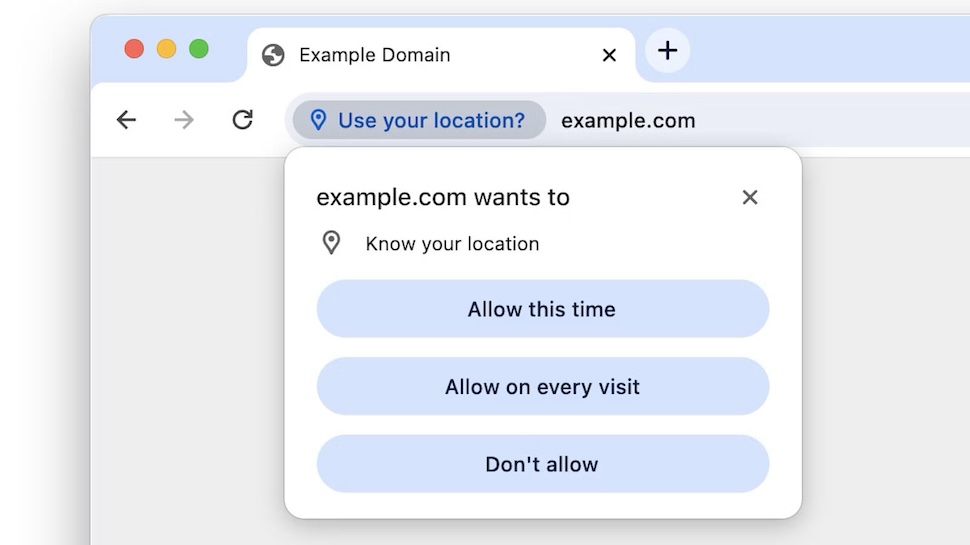
Google is changing how permissions work in Chrome for the better, with options for temporary access soon to become available in the next version of the company’s popular browser which accounts for around six in 10 desktop web sessions.
The change allows users to make temporary access available for sites requesting access to system hardware and information “with a gradual rollout” from Chrome 116, which is set for release on August 15.
The ‘Allow this time’ setting will be available for “some of the most common permissions” on Chrome for desktop, including geolocation, camera, and microphone.
Chrome online security
When a user visits a site that requests access to one of the three above permissions, they can choose from ‘Allow this time’ or ‘Allow on every visit.’ Previously, users wanting to grant temporary permission will have had to grant permission and then unauthorize access via the settings.
At the same time, users can select ‘Don’t allow’ which creates a persistent block, or click the ‘X’ icon to exit the pop-up, which only blocks access on this particular occasion.
Google says that its own research has found that users sometimes aren’t ready to make persistent decisions for website permissions, especially if they are assessing the validity of a website for the first time. With the launch of the new temporary access option, Chrome’s developers hope to offer two benefits: increased control and more clarity.
One-time permissions will expire when a user closes the page in question, if 16 hours have passed since access was granted, or in some cases, if the page has been running in the background for more than five minutes. Users can also manually revoke the permission.
It’s also worth noting the similarity between the new Chrome options and existing menus in Android. Google’s developers say that aligning the UX helps to create a clearer environment and to prevent confusion.
- Check out the best hybrid working tech you need whether you’re in the office or at home







